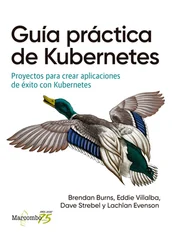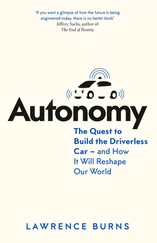Truth be told, they felt a little cheated by the way the first race went. The communication out of DARPA had led the team to believe that the robots would have to navigate rough territory and brutal off-road conditions. DARPA’s actual route turned out to have some hairy spots, such as tunnels and narrow fence gates. But there was nothing arduous about the road itself. That had been a smoothly graded desert thoroughfare. Your typical subcompact import could have driven off a car lot and navigated it. Looking back, Red Team had wasted countless hours ensuring their robot would be able to handle off-road conditions. And not just handle them—handle them fast . That’s why they’d used shocks and springs to suspend the electronics box and the gimbal, to ensure the computer equipment would be able to withstand the resulting jars and vibrations. Had Red Team forgotten about testing the robot in the most difficult of conditions, and just concentrated on developing a vehicle that would be able to roll from one GPS waypoint to another, then many team members figured they would have ended up finishing the first race. They could have won.
So this time, Whittaker concentrated on refining the capabilities Red Team had already developed, including the pre-driving approach that it had used in the first challenge. In August 2005, Whittaker moved both Sandstorm and H1ghlander out to Nevada. The robotics engineer figured the federal agency would amp up the difficulty for the second race. Some of the toughest roads in the nation were the M1 Abrams tank courses at the Nevada Automotive Test Center. So that’s where Red Team landed with just three months to go, to put the robots, and the team, through a series of what were in effect dress rehearsals designed to replicate race-day conditions—right down to special costumes worn by DARPA staff stand-ins.
Red Team tended to use two different routes to test its vehicles. One, known as the “Pork Chop,” was a 48-kilometer loop that featured everything from dirt road and pavement to cattle guards, high-voltage power lines and railroad crossings. The Hooten Wells route was an 85-kilometer one-way line that followed the course of the Pony Express and featured a dry lake bed, gravel road and a narrow canyon.
The testing featured its share of disasters. Spiker had a credit card linked to a Carnegie Mellon account and was authorized to spend $100,000 a month, a figure he regularly blew past procuring the spare parts required to repair Sandstorm and H1ghlander after the damage caused on their testing runs. For example, on August 26, just twelve days after they arrived in Nevada, H1ghlander sheered off its front right wheel as it navigated a particularly treacherous off-road trail. On September 15, Sandstorm was clotheslined by a tree, sustaining significant, but nevertheless repairable, damage.
These setbacks aside, the testing was going well.
For the first time, Sandstorm and H1ghlander were completing challenge-length runs that featured some of the toughest terrain the team could throw at the robots. The vehicles drove more than 1,600 kilometers each. Better yet, they were completing these runs in times that would have them finishing the race in under seven hours. Red Team was feeling very good about its chances.
Even so, Whittaker was working his team as hard as he ever had. The 4:00 A.M. wake-ups were taking their toll. The race rehearsals started at 6:30 A.M., just like they would during the actual event, and then, after the course work, the team would take the robots back to their garages, where the coders and the mechanics would work long into the night to make improvements and repairs. The next day, they’d rise at four and do it all over again. It was a grueling routine. “Everyone was scraped raw by exhaustion,” Whittaker recalled.
To refresh everyone, to ensure his team was sharp and fully rested come race day, Red set a week’s vacation before the national qualifying event, which began September 28, 2005, at the California Speedway. There, forty-three teams would be evaluated by DARPA, competing to become one of twenty-three finalists to qualify for the actual race on October 8, 2005.
The final day of testing was September 19. Whittaker’s culminating goal had Sandstorm and H1ghlander navigating 10 laps of a 30-mile-long course, to accumulate 300 miles in total, about double what the robots would have to do on race day. Once they achieved the distance, the team would freeze the software, store the robots and disperse to their own chosen habitats for the pre-race rest.
By the afternoon of the nineteenth, Sandstorm was ready for the race but for a last-minute tire and oil change. Meanwhile, H1ghlander was nearing the final laps of its last test session. Following behind in AM General’s second donated Humvee was Peterson in the passenger seat and software engineer Jason Ziglar behind the wheel. Ziglar was doing his darnedest to keep up with H1ghlander, whipping the steering wheel this way and that, his foot jammed on the accelerator. With H1ghlander about to start its final lap, having already gone 270 miles, Peterson called Red in Pittsburgh, where he was handling some last-minute details. “The vehicle is driving really well,” Peterson told him. “But we’re really beating up on it.” What if something happened? Peterson recommended to Red that they call off the final lap. “It felt like we’d learned everything we were going to learn,” Peterson recalls.
Giving up before the team had completed a goal wasn’t in Whittaker’s DNA. He made the call— finish the route . So they kept going. Moments later, H1ghlander was kicking up its usual dust cloud. From the passenger seat in the chase vehicle, Peterson couldn’t see the robot, but thanks to his laptop’s Wi-Fi connection, he could see what H1ghlander could see on the monitor. Approaching a leftward curve, the robot slowed down, the way its algorithms specified, and then accelerated into the curve. Except it swayed just a little bit to the right, off the path—and Peterson’s whole display went red. When the dust cleared, Peterson saw a dirt formation on the right side of the road that looked like the sort of thing a stunt driver would use to shoot a car up into a two-wheeled drive. In this case, the stunt jump had sent H1ghlander over on its side, and ultimately, onto its roof. The robot had caught the right wheels on the ramp at 30 mph and launched itself into the air.
Another rollover.
Having been through this before, the team leapt into action. No one broke down in tears over this one—Spiker was prepared. Many of the extra parts required to repair H1ghlander lay in the mechanics shed at the Nevada Automotive Test Center base. The rest, Spiker arranged to have shipped from Pittsburgh to Nevada.
And that week’s worth of vacation everybody was supposed to go on the next day? Gone. Instead it turned into the biggest work session the Red Team had ever faced.

Once Stanford’s AI class conducted its 8.4-mile test run, Thrun winnowed his team down to four key people. Thrun himself and Carnegie Mellon alum Mike Montemerlo were the first two. Among those who had taken his robot class, Thrun discovered a fellow German, a computer-vision expert and programming whiz named Hendrik Dahlkamp. The fourth was a grad student named David Stavens.
A quartet was appropriate to the task because that’s how many occupants the Touareg comfortably fit. For a week at a time, Thrun and the other three would head out into the Mojave Desert and drive the trails. At first, they’d set the vehicle on a trail, watch it navigate itself, and eventually the robot would encounter something it couldn’t handle. Then someone would code a fix. As the process repeated itself dozens, and eventually hundreds, of times, the robot became sophisticated enough that it began to teach itself. In this phase, Thrun would drive Stanley through the desert, manning the controls, slowing down when the road became rough or steep, accelerating on smooth straightaways. After several days of this, Thrun would go back to the university, and Stanley, working overnight, would retroactively look at the data to engage in its own learning. Confronted with this terrain, Stanley would think, Sebastian chose to drive here —and I will do the same. “The robot would basically spend the night sorting through the data and bring order from chaos,” Thrun said.
Читать дальше













